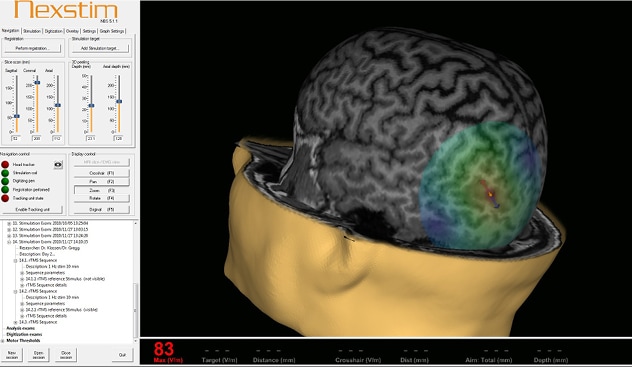April 15, 2021
Mayo Clinic has used repetitive transcranial magnetic stimulation (rTMS) to successfully treat a 49-year-old man who experienced 200 seizures a day. Although rTMS has been used to map seizure origin sites, the patient was the first at Mayo Clinic to have rTMS as a treatment for epilepsy.
"There was a noticeable reduction in seizures that occurred even in the initial few days of the treatment, and then the seizures stopped," says Jeffrey W. Britton, M.D., a consultant in Neurology and chair of Epilepsy at Mayo Clinic in Rochester, Minnesota.
The patient, Eric Berg of Chesterton, Indiana, had experienced seizures since the age of 12. However, in spring 2020, their frequency increased, affecting his daily life and his ability to work.
Initially, Berg was reluctant to seek medical care. "But there was a point where I told my fiancee, 'I think I've had more seizures in the last couple weeks than I've had my whole life,'" he says. "It was getting to the point where I was like: OK, this is my brain. Something's wrong."
When Berg arrived at Mayo Clinic's campus in Rochester, Minnesota, in June 2020, he thought he was having 50 to 60 seizures a day. But electroencephalography showed that he was actually having a seizure roughly every 12 minutes.
Targeting seizure origins

Targeting seizure origins
Image shows the location of the abnormality that was causing 200 seizures a day.
Imaging tests found a focal cortical dysplasia in the left occipital lobe. The seizures were medication resistant. In addition, due to the lesion's location, surgery posed risks of visual loss, right hand apraxia, and reading and speech impairment.
However, Brian N. Lundstrom, M.D., Ph.D., a neurologist at Mayo Clinic's campus in Rochester, Minnesota, thought that Berg would be a good candidate for rTMS therapy. Mayo Clinic has extensive experience with innovative treatments for epilepsy. Dr. Lundstrom, who researches noninvasive and invasive methods of brain stimulation, has been working to develop rTMS treatments for epilepsy.
"We have used rTMS for other purposes — for treating depression, as well as for mapping of epilepsy patients," he says. "The real benefit of noninvasive brain stimulation like rTMS is that it is such a low-risk approach. We think it may be a reasonable option for many patients."
Berg, who had five initial rTMS treatments on his first visit to Mayo Clinic, hasn't experienced a seizure since June 24, 2020. "I'm now seizure-free," he says. He returns to Mayo Clinic in Minnesota every few months for follow-up rTMS treatment.
Dr. Britton notes that rTMS is just one of many innovative treatments for medically intractable epilepsy. "People who are leery of seeking help for seizures should be encouraged to seek care at an epilepsy center where they can learn about these emerging options," he says. "Advances are occurring all the time."
For more information
Refer a patient to Mayo Clinic.